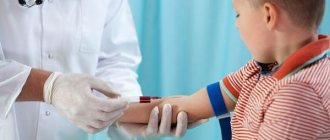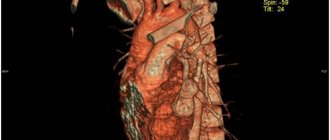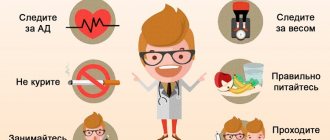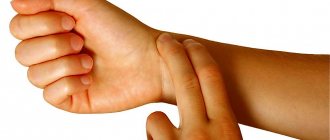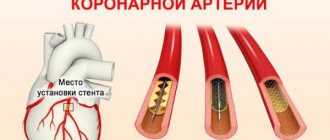In children, regardless of age, high fever, nausea and vomiting are very alarming symptoms, indicating that seeking medical attention should not be delayed. Frequent vomiting can cause dehydration of body tissues. Moreover, the rate at which children lose water directly depends on their age. The main task of parents in such cases is to prevent the development of the disease. A child with fever with nausea and vomiting should be alerted.
Why is fever dangerous in children, and how to deal with it?
advises a medical pediatrician. Fever is the most common sign of the development of infectious and some other diseases in children.
Many things can cause a child to have a fever, from common childhood illnesses such as chicken pox and tonsillitis to reactions to vaccinations. An increase in body temperature is an innate protective mechanism by which the body stimulates the functioning of the protective factors of the immune system. Also, the increased temperature of the internal environment of the body itself can lead to inactivation or death of pathogens of many diseases. Remember that everyone's body temperature normally fluctuates 1-2 degrees throughout the day and may vary depending on age, activity level and other factors.
So rising temperatures are not a “problem.” This is an indicator that some kind of attack by microbes, viruses or other factors has occurred on the body, and the body reacts to it, gives a “response”. It is much worse when bacteria or viruses attack, but the temperature does not rise (i.e. there is no immune response, or it is insufficient).
Causes of fever, nausea and vomiting
Modern pediatrics indicates in many sources two reasons for the appearance of vomiting at a temperature of 37 degrees Celsius and above:
- the body gets rid of toxic substances;
- damage to the body by pathogenic bacteria, which leads to its destabilization.
These reasons are interconnected. Nausea makes itself felt against the background of a general painful condition. Only a qualified doctor can determine the exact cause of the problems after a thorough diagnosis.
What is a fever?
The normal temperature for babies and children is around 36.4°C, but this may vary slightly from child to child.
- Low-grade fever is an increase in temperature from 36.7 to 38 degrees.
- Fever is a high temperature of 38 C or more.
The following symptoms appear when you have a fever:
- Your baby's forehead, back, or stomach feels hotter than usual.
- The surface of the skin becomes sweaty (moist) and sticky.
- The baby's cheeks and sometimes forehead turn red.
To measure temperature, it is best to use a safe digital thermometer without mercury filling.
What to do if your baby gets chickenpox?
Has your child caught chickenpox? Of course, this acute viral disease can also cause high fever. How to proceed in this case?
The most important thing is to choose an antipyretic drug for your baby. Under no circumstances should you use Nurofen. To combat high fever during chickenpox, medications containing Paracetamol are suitable.
How to measure a child's temperature:
- The child's armpit should be clean and dry! If it is wet, the thermometer will show an inflated result!
- Move your child's arm to the side and place the thermometer in the upper armpit.
- Gently place your hand against your body and keep it pressed while taking the temperature.
- Leave the thermometer in place for as long as indicated in the instructions. Some digital thermometers beep when the temperature measurement is complete.
- Take out the thermometer. The display will show the baby's body temperature.
- If your child has just had a bath or has been wrapped tightly in a blanket, wait 10 minutes before taking their temperature.
- Professional infrared thermometers allow you to instantly measure body temperature. If there is a need to measure the temperature as accurately as possible, but there is no professional thermometer at hand, the most accurate results are obtained by measuring the temperature rectally.
How to properly lower the temperature at home?
Effective folk ways to reduce fever without medications in children:
- A drink made from cranberries is a unique diaphoretic that reduces fever. The berry is useful for containing vitamins and accelerates the elimination of decay products.
- Chamomile tea is an excellent anti-inflammatory remedy. To prepare the infusion, pour a tablespoon of chamomile into a glass of boiling water, let it brew for 2 hours, drink up to 5 times a day.
- Elderberry decoction effectively helps reduce fever. It is enough to take 50 g of elderberry and pour boiling water (200 ml) over it.
- Linden tea – gives excellent results when consumed with honey. The child will sweat profusely, which will reduce body temperature due to the evaporation of excess moisture from the skin.
You can wipe the child's body with a terry towel moistened with water at room temperature. Applying a heating pad with ice to large vessels helps. Wrapping in a damp towel or sheet is also recommended.
What to do if your child has a high temperature
The child must be kept at home and supervised. The temperature should drop within 3 or 4 days.
After vaccination, the temperature can remain normal for up to 48 hours.
What do we have to do:
- if the child is less than 6 months old, call a doctor immediately
- Give your baby plenty of fluids to drink (or continue breastfeeding)
- monitor signs of dehydration
- feed if the baby wants to eat
- Regularly monitor your child's condition at night
- give the child antipyretics prescribed by the doctor
Maximum allowed values
Today there is no exact understanding of what temperature is dangerous for a child.
It all depends on how the baby feels. However, if numbers above 38.5 appear on the thermometer, then you should definitely give medicine. An ambulance should be called when the numbers are 39 and above. If a child’s temperature does not go down after taking antipyretics, then what to do? You should definitely call a doctor at home or go to the clinic to determine the exact cause of this condition, which is incomprehensible to parents.
What not to do when the temperature rises
- Do not undress your child or cool him or her with blows or rubs; fever is a natural and healthy response to infection. Hypothermia can lead to complications from the infection.
- Do not cover your baby with a warm blanket or wrap him up, as this may cause heat stroke. Just cover your baby with a sheet or light blanket.
- Do not give aspirin to children under 16 years of age. Absolutely never! This may be due to a rare but dangerous disease called Reye's syndrome.
- In children under one year of age, medications available in the form of rectal suppositories are recommended to reduce fever.
- Do not self-medicate. For young children, the dose of drugs and the frequency of their use should be calculated individually; the prescription can only be made by a doctor after diagnosis.
How to reduce a child’s temperature with medications - tablets, syrups
Today one of the most popular drugs is Nurofen.
It is available in the form of syrup, capsules and rectal suppositories. For each age, you can choose your own option to safely and painlessly give medicine to your baby. Paracetamol, which can be found in the pharmacy in the form of tablets or syrup, has a good effect.
Some parents use ibuprofen, which is recommended for acute inflammatory diseases, teething and other pathological conditions, starting from 6 months.
When should you seek emergency medical help?
It is necessary to call a doctor or ambulance in the following cases:
- The child is less than 3 months old and has a temperature of 38°C or higher
- The baby is between 3 and 6 months old and has a temperature of 39°C or higher
- Against the background of fever, rash, vomiting, and diarrhea appeared
- Fever lasts for 5 days or more
- The child refuses the breast, does not eat, behaves unnaturally
- The child has signs of dehydration: dry diapers, sunken eyes, crying without tears.
Still have questions?
Get an online consultation from leading pediatricians in St. Petersburg!
A professional and experienced pediatrician will answer your questions.
Medical care for a child without leaving home at a convenient time.
sign up for a consultation
A Skype consultation lasts 45 minutes.
In what cases is this disease observed?
Pediatricians call the following manifestations of this disease:
- Consumption of poor quality products. Due to the entry of pathogenic organisms into the child’s digestive tract, the functions of internal organs are disrupted, which causes lethargy, stomach colic and fever. These processes are accompanied by diarrhea.
- Infection with rotavirus infection, which manifests itself in infectious diseases: measles, scarlet fever, influenza, sore throat. In such cases, the symptoms of acute respiratory disease include nausea and a gag reflex. With rotavirus infection, they make themselves felt at the initial stage.
- The temperature rose. In this case, manifestations of nausea and vomiting cannot be excluded. Pediatrics considers such cases as the body’s reaction to high temperature.
- Force feeding can cause nausea and vomiting.
- Teething in babies. Teething can cause high fever and nausea and vomiting. Often the stress experienced by a child manifests itself in the same way.
- Intestinal obstruction, pneumonia, appendicitis. With all these pathologies, the first symptoms are fever, severe headache, nausea and gag reflex.
Modern pediatrics has high-quality diagnostic equipment and effective medications. A prerequisite for successful treatment is timely consultation with a doctor. This needs to be done as quickly as possible, which will avoid serious consequences for your child. Moreover, you need to take the issue of choosing a doctor seriously. He must have an impeccable reputation.
Signs of particularly dangerous diseases accompanied by fever
Fever can be a sign of serious illnesses such as meningitis, urinary tract infection and sepsis. It is necessary to urgently call an ambulance or take the child to the hospital emergency room if he has:
- There is tension and stiffness in the neck muscles,
- A rash has appeared that does not go away when you press on it with a finger
- The child is very irritated by light,
- The attack of fever does not go away, the child “shakes” with chills
- The child has unusually cold hands and feet
- Your baby has pale, mottled, blue, or gray skin
- The baby's crying has become weak, moaning, and does not look like usual
- The baby is sleepy, lethargic, and difficult to wake up
- The child has difficulty breathing, the stomach is pulled in under the ribs when breathing
- In a newborn baby, the fontanel on the top of the head has become bulging
What should you do if your child has a seizure? Seizures are a very serious side effect of fever in some children. Febrile seizures occur in 2–4% of all children under 5 years of age. Not all seizures cause sudden muscle twitching. Some seizures look like “fainting.” If your child develops a seizure, do the following:
- Place your baby on his side.
- Do not put anything in your child’s mouth, even if “experienced” grandmothers recommend doing so.
- Call an ambulance immediately if the attack lasts more than five minutes.
- If the attack lasts less than five minutes, call your doctor or make an emergency visit to your doctor.
Is it necessary to bring down a child’s temperature to 36.6?
If, after using antipyretics, the readings decrease by 0.5°C within an hour, then the process is normal. Do not aim to reach 36.6°C immediately. This can cause serious overload of the child’s body, which can lead to a deterioration in overall well-being.
The ideal temperature would be 37-37.5 degrees. After some time, a jump may occur again. This occurs because the active component of the medicine is excreted from the body and ceases its effect. If several hours have passed after taking the drug, you can give the child another dose. It is very important to observe time intervals between doses and monitor temperature readings.
With an effective fight of the immune system against pathogenic microbes and with a competent approach to treatment, recovery, as a rule, is 3-5 days.
Coronavirus infection in children.
Symptoms of coronavirus in children resemble ARVI or are absent altogether. Since a Covid test is not prescribed for a child with a mild illness, there is a high probability that there are many more children with COVID-19 than are recorded.
The SARS-CoV-2 virus enters the child's body through airborne droplets and/or contact (through objects). The first symptoms of Covid in children, as in adults, appear at the end of the incubation period, on average a week after infection. In children with weakened immune systems, the incubation period is reduced to a couple of days. As a rule, children recover on days 7-11 of the disease. Complications after Covid in children are considered to be: pneumonia, bronchitis, bronchiolitis, sinusitis, frontal sinusitis, myocarditis. Possible development of otitis media, hearing loss, neuritis, false croup - laryngeal stenosis. With chronic kidney and liver diseases, there is a possibility of their exacerbation and progression.
A more severe course of Covid is noted in children under one year of age and adolescents over 15 years of age who have chronic pathologies and concomitant diseases, such as:
- cardiovascular diseases;
- oncology;
- immunodeficiency states of various origins;
- lung diseases;
- neuromuscular diseases;
- moderate to severe encephalopathy;
- type 1 diabetes.
In children aged 1 month to one year, the disease is more severe than in newborns. The incidence of severe and critical disease is significantly higher than in other age groups. Symptoms are most often associated with gastrointestinal disorders. Associated signs that may signal coronavirus in infants: the appearance of diarrhea, periodic bouts of vomiting, and a slight increase in body temperature. The stool is liquid, marsh-colored, and may be streaked with blood. Dry cough and difficulty breathing (even shortness of breath). One of the visible symptoms in infants, which indicates a lack of air, is swollen wings of the baby’s nose. Gastrointestinal disorders due to Covid in children under one year of age are often accompanied by abdominal pain. This symptom can be determined independently by certain signs in the child’s behavior:
- presses the legs to the stomach or often jerks them;
- refuses to eat or eats little, and immediately after eating begins severe vomiting;
- frequently wakes up or cannot sleep.
Similar symptoms also occur with functional disorders, for example, infant colic, so a pediatrician must determine the disease.
You should contact your doctor immediately if you experience one or more of the following symptoms:
- the temperature rises sharply (up to 38-39 degrees);
- convulsions begin;
- loose stools occur more often 5-7 times a day, bloody clots are observed in the stool;
- breathing becomes difficult, whistling or wheezing is heard when inhaling or exhaling;
- heart rate increases.
Children aged 1 to 5 years can react to coronavirus infection with a sharp rise in body temperature. Changes in the child’s behavior are possible, such as increased moodiness or tearfulness, lethargy and sudden changes in mood. You can suspect the development of coronavirus in a child based on the following symptoms:
- severe weakness;
- slight cough;
- loss of appetite;
- a sore throat;
- nasal congestion;
- increased body temperature;
- changes in the rhythm and frequency of breathing;
- chest pain;
- dyspnea;
- conjunctivitis;
- gastrointestinal disorder.
The main danger as a complication of Covid in children is multisystem inflammatory syndrome (MSI). This is an excessive immune response of the body to the penetration of the virus. As a rule, MBC develops 1-6 weeks after the acute phase of the disease, even if children have had a mild or asymptomatic form of COVID-19. By this time, in the majority of children who have recovered from coronavirus, PCR tests for covid give a negative result, but antibodies to coronavirus are detected.
As a rule, the first sign of multisystem inflammatory syndrome after Covid in children is a sharp increase in body temperature to high levels (above 38 degrees). Hyperthermia can last for a day or more. A rash may be observed on the body (all over or in certain areas) - macular and/or papular. Characteristic signs of multisystem inflammatory syndrome may include conjunctivitis, scleritis, swollen lymph nodes, and swelling of the palms and feet. One of the common symptoms of MWS is a red or crimson tongue and swollen, bright scarlet lips. The syndrome can lead to damage to the gastrointestinal tract, causing abdominal pain, vomiting, nausea, and diarrhea. The result of MWS can be cardiac, renal, hematological, dermatological disorders, as well as damage to the central nervous system, respiratory failure associated with lung damage.
Most often, coronavirus in children under 6 years of age is asymptomatic. But the asymptomatic course of the disease is not a reason to relax and not monitor the child’s condition. The virus, penetrating the body, causes an immune response and can affect other systems.
Symptoms of Covid in children aged 6 to 12 years are similar to the typical clinical picture of ARVI - sore throat, nasal congestion, cough. A rise in temperature from 37 to 38 degrees occurs more often in them than in younger children. Added to the clinical picture are symptoms in children aged 9 to 12 years, such as aching muscles and joints, conjunctivitis, a purple-red rash, loss of appetite, myalgia (muscle pain) and headache. The course of the disease in children of this age group is more reminiscent of the symptoms of coronavirus in adults.
COVID-19 in adolescents
In children over 12 years of age, the classic clinical picture of coronavirus infection is more common. They may develop an intense dry cough, sore throat, runny nose, loss of smell and taste, and distorted perception of odors. Unlike patients in younger age groups, adolescents may experience malaise with headache and muscle pain. COVID-19 is especially dangerous for those teenagers who have previously been diagnosed with heart disease. Under the influence of the virus, the myocardium is damaged, which leads to serious consequences related to the functioning of the heart.
Diagnosis of coronavirus in children
When the first signs characteristic of COVID-19 appear and/or when a child comes into contact with a person with confirmed coronavirus, you must call a pediatrician. He will examine the child, prescribe a PCR smear for coronavirus and a general blood test. Based on the test result, the pediatrician will give recommendations for caring for the child, prescribe treatment, and, if necessary, refer for consultation to other specialists (pulmonologist, otolaryngologist, ophthalmologist, etc.). If pneumonia is suspected, an X-ray or computed tomography scan of the lungs is performed. To detect respiratory failure, you can use a pulse oximeter, a device that helps measure the concentration of oxygen in arterial blood. Pulse oximeter readings should not be lower than 96 units.
Prevention and treatment of coronavirus in children.
Treatment of Covid in children is no different from symptomatic treatment of other acute respiratory viral infections. There are currently no specific medications for the treatment of COVID-19 in children. Therapy is usually aimed at alleviating the symptoms of the disease and preventing the development of a bacterial infection. Typically, for mild to moderate forms of COVID-19, the pediatrician gives the child the following prescription:
- bed rest, maximum limitation of contacts;
- moist cool indoor air;
- drinking plenty of water;
- washing the nasal mucosa with saline solutions;
- gargling with antiseptics;
- antipyretics for high temperatures (above 38.5 °C);
- enterosorbents for digestive problems;
- antitussives and vasoconstrictors;
- antihistamines.
In case of a complicated course of the disease, antibacterial drugs and drugs that normalize respiratory function are prescribed. If it is necessary to undergo routine vaccination, a child can be vaccinated after Covid two weeks after complete recovery. To minimize the likelihood of a child becoming infected with coronavirus, it is necessary to maintain personal hygiene: wash your hands more often (at least 20 seconds), use antibacterial wipes. As often as possible, treat gadgets, toys, door handles, and work surfaces with antiseptics. It is necessary to ensure that children do not touch their face or eyes with their hands. Maintain water and drinking regime. Pediatricians recommend irrigating the nasal cavity with saline solutions after visiting public places. You should also spend more time in the fresh air and regularly ventilate the room.
How to help a child’s body fight infection?
Regardless of whether you follow the recommendations on what temperature to lower in children, you must take care to create the necessary conditions for the patient. All family members should improve the quality of personal hygiene: wash their hands, wear disposable gauze bandages, etc. You also need to provide the child with separate cutlery and dishes.
Recommendations for a speedy recovery:
1. A sick child must remain in bed.
2. It is necessary to ventilate the room in which the baby is located (the influenza virus and other microorganisms are concentrated in musty air).
3. Care should be taken to humidify the air (at the same time, the mucous membranes of the nose and larynx do not dry out; this improves local immunity and promotes well-being).
4. You should ensure that you drink plenty of fluids (virus breakdown products are eliminated through the kidneys, which reduces the load on the body).
5. The baby’s clothes should be light, preferably made from natural fabrics.
6. It is considered normal for a baby to have no appetite. You should avoid spices, citrus fruits, and dairy products, which can cause irritation of the gastric mucosa. A hot bath at a high temperature is not the most pleasant feeling, but cool (not cold) water can help normalize the indicators.
7. It is recommended to use the bath together with antipyretics, and not instead of them. You can also get some relief by applying a cool compress to your forehead.

